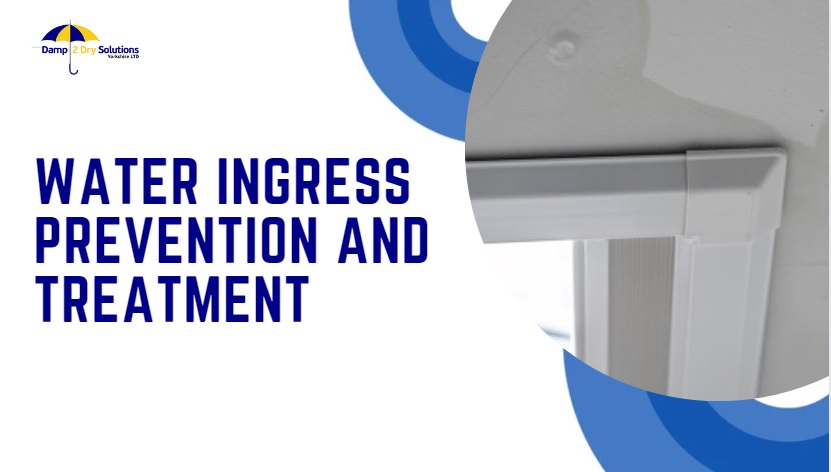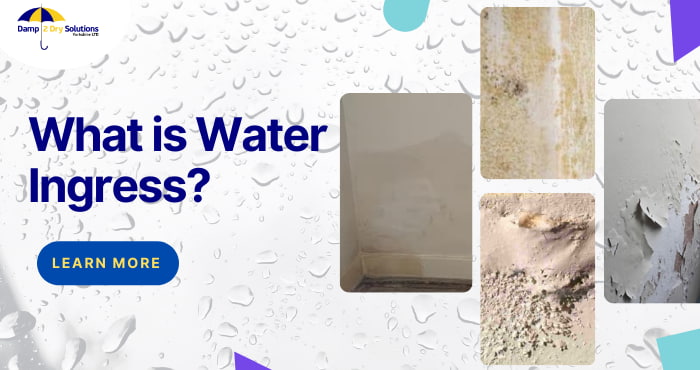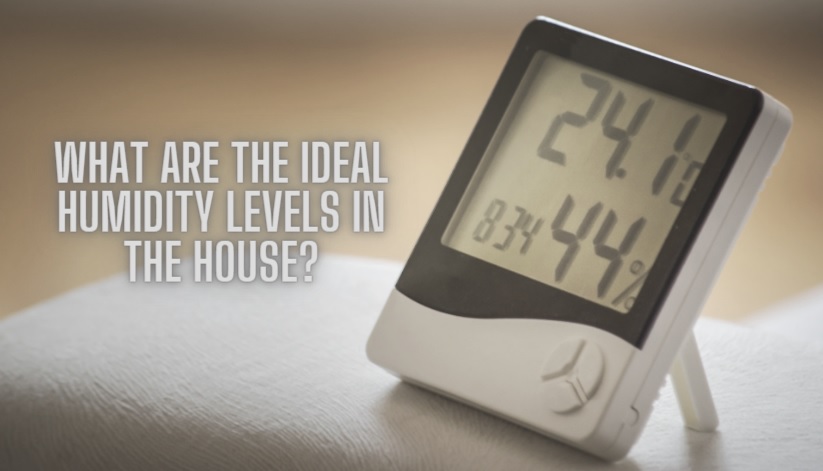This is the most often requested question by property owners. So, exactly what is water ingress?
What exactly is Water Ingress?
Water ingress is a serious issue that arises when water enters the structure. It is also called as “penetrating damp” due to its penetrating character.
It starts with a minor water leak that can seep into your home and cause harm. Water ingress occurs when water from the outside finds its way into the building.
In this blog, we will discuss water incursion in buildings, its causes, and how it can be addressed. So, without further ado, let’s get started.
Water Ingress meaning
In simple words, water ingress occurs when water enters your structure. Any water entering your house is a negative sign. It can significantly harm the construction of your building and cause big complications.
Fungal decay, damage to the interior of the building, and even health problems might occur. As a result, it is critical to prevent water ingress or deal with water infiltration as quickly as feasible.
What are the Causes of Water Ingress?
Water ingress has a wide-ranging impact on buildings. It usually happens as a result of a structural flaw, such as cracks in the walls that allow water to permeate the property. If left untreated, it can cause a variety of damp-related issues.
- Damp plasterwork
- Increased heat loss
- Damp stinking smell
- Frost damage to masonry
- Wet rot
- Dry rot
- Hideous water damage on both the outside and inside of a property
Let us take a look at some of the common causes of water ingress:
Roof deterioration:- Broken tiles, chimney problems, etc., will need the attention of a professional to inspect the roof for any damage that is occurring. You can simply install waterproofing materials for your rooftop.
Gutter failure or obstruction:- If the gutters become clogged, water will begin to enter the property.
Walls:- Water infiltration can be caused by blocked air bricks, a missing damp proof course (DPC), broken pipes, poor interior plumbing, rendering, and porous brickwork.
Windows:- The flashing around the window frames is faulty.
Damp Problem:- One of the most common reasons for water infiltration is a faulty damp-proof course or a missing DPC.
Plumbing issues:- Water infiltration might occur if there are leaks in the house.
Also read:- How to damp proof a wall?
What Damage Can It Do?
Here are some most common problems associated with Water Ingress in buildings.
Timber deterioration:- Damp wood can attract fungus, which can lead to dry or wet rot if not handled in a timely manner. These can be costly to treat and can cause structural damage. Get in touch with our timber treatment expert team.
Masonry deterioration:- Water can enter through any fractures in the bricks, render, or mortar.
Internal walls and partitions:– Plaster and paint can be damaged by damp internal walls. Damp proof plaster solutions can help you deal with it.
Health:- Damp can harm your health by releasing allergens, irritants, and toxins.
Signs Of Water Ingress
You can perform your own inspection to discover any frequent signs of water infiltration. You may notice external flaws before you see any signs of water penetration interior.
You should be aware of the following warning signs:
- Paint peeling
- Mold development on the walls
- Damp and musty odour
- Walls with damp patches
Water Ingress in a Cellar or Basement
If you have a basement and have not had it waterproofed, there is a good chance that water will enter it. Water infiltration in the basement (basement moisture) is the most common problem that many property owners experience.
The basement and cellar have considerable hydrostatic pressure. Moisture in the surrounding ground exerts this hydrostatic pressure. If your residence is in a flood plain, hydrostatic pressure is increased. As a result, any flaw in the basement structure can allow water to enter.
What to do about water ingress in a cellar or basement?
Water intrusion in basements is undeniably a serious concern. To prevent the structure from hydrostatic waterproofing, external waterproofing is constructed.
Type C protection is supplied inside by adding a suitable waterproofing system. The Type C system gathers and controls any entrance of water by redirecting it to a secure disposal point. Any water incursion is directed through the drainage channels to either a sump and pump chamber or away from the structure. Tanking your basement to prevent water Ingress, foundation crack injection, and other basement waterproofing options are available.
If your basement lacks a waterproofing solution, you may encounter water infiltration issues sooner or later. As a result, it is preferable to call a waterproofing specialist that is experienced in dealing with these issues.
Difference between Water Ingress and Water Egress
Water from the outside entering your home is referred to as ingress. Egress means to leave, hence this refers to the water that exits your home.
Water outflow and ingress can both cause issues with the structural of your building.
Water ingress
Leaks are one source of water ingress. Water leaks allow water to enter your property and cause damage. If you find a leak, you must immediately repair it. The longer you wait, the worse the damage a leak can inflict.
Water intrusion can cause dampness in your property. Penetrating damp might also have serious negative effects. Long-term dampness exposure can eventually decrease lung function.
Basements are vulnerable to flooding. If they are not appropriately waterproofed, they might be a source of water ingress. Waterproofing the basement helps prevent water penetration and moisture from spreading throughout your home.
Water egress
While appropriate drainage allows water to safely move away from your home, poor drainage can cause major issues. This is frequently the cause of water egress injury.
Your property must be protected against both water intrusion and water egress.
Water ingress prevention and treatment

Water ingress prevention should be a top priority if you want your property to last a long time. You should inspect your structure on a regular basis for symptoms of water penetration so that you can treat it as soon as feasible.
There are several devices on the market that provide additional safety for your building. Use a water repellent or facade cream like Remmers Funcosil to prevent water Ingress through masonry. These compounds permeate the walls and give the building with long-term water repellency.
If you notice evidence of water ingress, you must act swiftly before the situation worsens.
How can water ingress be treated?
To address water ingress, take the following steps:
- Determine the source of the water intrusion and resolve the problem.
- Allow the afflicted areas to dry completely.
- Repairs must be made.
How to stop Water Ingress through brickwork?
There are numerous goods available, and it is always worthwhile to compare them in order to discover the best answer for your home.
These products function as a spray-on solution that chemically adheres to external walls, forming a water-resistant and insulating seal. It continues to allow the building to breathe by attaching to the internal surfaces of individual pores, unlike other treatments on the market that require extra ventilation.
This has two major advantages. First, it prevents water penetration, directing rain away from the brick. Second, by keeping the air pockets dry, they can fully perform their insulating function, boosting not only your home’s water resistance but also its energy efficiency.
How to Stop Water Ingress Under Garage Door?
Several methods can be used to stop Water Ingress Under the Garage Door
- Put threshold seal to your clean concrete basement floor with an adhesive.
- Replace the bottom seal on your garage door with a larger one.
- If your garage floor slopes, you’ll need to purchase an adjustable aluminium retainer.
Before you go
Take action as soon as you notice signs of water ingress; it will cause small discomfort while saving your property from significant damage. Proper measures must be taken to dry up existing wetness, prevent new water intrusion, eliminate the fungus, and repair any damage that has occurred.

If you have any questions about the causes, sources, or risks of water ingress, seek the assistance of a professional company. You can book an independent damp surveyor near me and receive a rapid response from water ingress specialists.
Related questions
1. Can water damage bricks?
Yes. Bricks are porous materials, so they can easily damage by water. Water can penetrate bricks easily and can cause severe damage.
2. How do I stop water seepage in my walls?
After detecting the origin of water seepage, you can prevent it by external waterproofing coats for the walls. It creates a barrier between rainwater and moisture and prevents your walls from dampness.





